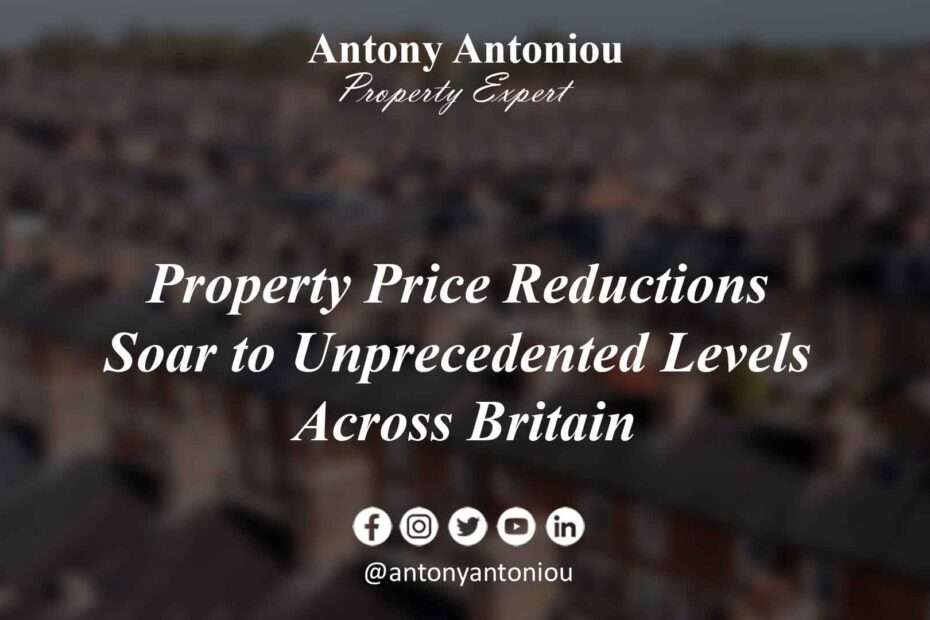Property Price Reductions Soar to Unprecedented Levels Across Britain
The British property market has witnessed an extraordinary surge in price reductions throughout 2024, with nearly one million properties experiencing downward price adjustments—the highest figure ever documented, according to groundbreaking research from property analytics firm TwentyEA.
The comprehensive analysis reveals a striking 8.1 per cent increase compared to the previous year’s figures, whilst demonstrating a remarkable 17.6 per cent surge when measured against pre-pandemic levels in 2019. Perhaps most telling is the revelation that 38 per cent of all concluded property listings throughout 2024 underwent at least one price reduction—a figure that has sent shockwaves through the property sector.
The most pronounced impact has been observed in properties valued below £350,000, where the frequency of price reductions has escalated most dramatically. This trend has manifested across virtually every corner of the United Kingdom, with Northern Ireland standing as the sole exception to this nationwide pattern. The Welsh property market has experienced particularly significant volatility, with the proportion of properties requiring price reductions climbing substantially from 36 per cent in 2023 to a startling 40 per cent in 2024.
In their meticulous examination of price reductions across various regions and price brackets, TwentyEA’s researchers identified two distinct patterns that challenge conventional wisdom about the root causes of these adjustments. Rather than pointing towards estate agents overvaluing properties—a common assumption in such scenarios—the data strongly suggests that seller expectations may be misaligned with market realities.
Katy Billany, Executive Director at TwentyEA, offered crucial insights into these findings: “Our analysis has revealed two particularly noteworthy trends. The first is the disproportionate concentration of price reductions within lower-priced properties. The second is the marked regional variation, with areas such as Wales experiencing especially high rates of adjustment. Were estate agents systematically overvaluing properties, we would anticipate observing a more uniform distribution of price reductions across all price brackets, alongside a more consistent pattern of reductions throughout different regions. The absence of such uniformity strongly indicates that sellers are entering the market with unrealistic price expectations.”
The implications of these findings extend beyond immediate market conditions. Estate agents and property professionals are now grappling with the challenge of managing vendor expectations in an increasingly complex market environment. The data suggests that sellers may need to adopt more realistic pricing strategies from the outset to avoid protracted selling periods and multiple price adjustments.
Billany concluded with a sobering forecast for the property market’s trajectory: “Given the unprecedented prevalence of price reductions we’re currently witnessing, our analysis suggests this trend is likely to persist for the foreseeable future. This pattern may well represent a fundamental shift in market dynamics rather than a temporary adjustment.”
The findings raise important questions about the broader state of the British property market and its direction in the coming months. With interest rates remaining elevated and cost-of-living pressures continuing to impact buyer behaviour, the property sector may be entering a period of significant realignment between seller expectations and market realities.
Industry observers note that this situation presents both challenges and opportunities for different market participants. While sellers may need to adjust their price expectations downward, potential buyers might find increasingly favourable conditions for property acquisition, particularly in regions where price reductions have been most prevalent.

